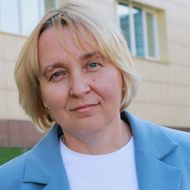Cognitive and Social Sciences in the Age of AI: Results of the MIX 2.0 School at HSE University in St. Petersburg
Can GPT replace linguists? How do neural networks help recognize emotions and analyze behavior? What factors influence insight when solving problems? Participants of the MICS 2.0 School of Interdisciplinary Studies, held at HSE University in St. Petersburg, sought answers to these and other questions.

The "MIX 2.0" school was held as part of the "Mirror Laboratories" project between HSE University in St. Petersburg and the Krasnoyarsk State Medical University named after Professor V. F. Voyno-Yasenetsky. It was organized by the Laboratory for Social and Cognitive Informatics.

Galina Oreshina
Research Intern, Laboratory for Social and Cognitive Informatics, MIX 2.0 Organisation Committee Member
"The main goal of the MIX 2.0 School is to create an environment for intensive interdisciplinary collaboration. Our goal is not only to impart knowledge but also to provide practical experience. Each team should be able to progress from familiarization with data to generating ready-made team solutions."
The school brought together psychologists, sociologists, linguists, programmers, and analysts from various universities. Participants underwent a competitive selection process: five teams of six people each were formed from over 160 applications. Among them were 12 students from HSE University in St. Petersburg. The program consisted of two parts: lectures by experts and an examination of research data, followed by teamwork on real cases.
"The school creates an opportunity for collaborative problem-solving through play, and the chosen format helps us understand how and why interdisciplinary dialogue is built," notes Larisa Mararitsa, Head of the Laboratory for Evidence-Based Psychology of Health and Well-Being and one of the organisers of "MIX 2.0."
Anastasia Kolmogorova, Head of the Language Convergence Laboratory, was one of the School's key experts. She tasked the teams with identifying the properties of verbal combinations that help participants find the answer and experience insight.

Anastasia Kolmogorova
Head of the Language Convergence Laboratory
"We worked with a dataset developed by Nadezhda Moroshkina, a senior researcher at the Institute for Cognitive Research, which presented the results of an experiment in which informants searched for a common word for three others. Since both our lab and the Laboratory of Social and Cognitive Informatics are actively integrating large-scale language models into their research, we decided to test this tool for exploratory analysis. The decision proved fruitful: during the discussion, I, as an expert, also gained several valuable insights."
Participants analyzed three case studies during the intencive course. The first case focused on the use of large-scale language models for analyzing linguistic features in creative tasks. The objective was to answer the question whether GPT can replace a linguist friend. The second case focused on the use of large-scale language models for emotion recognition and behavioral analysis based on video. The third case covered several areas: comparing human and machine generation of logical error problems, identifying insight factors in solving word problems, and creating visual stimuli for cognitive research and behavioral analysis.
Svetlana Chelpanova, a student at St. Petersburg State University, said that participating in "MIX 2.0" was an opportunity for her to gain practical skills in working with language models, so she can apply them in her future research. "We built a model that predicts insight features in problems. Representatives from various disciplines participated in this process, which, in my opinion, was very valuable, as each of them could learn something new and share their experience," she shared.
Participants also interacted with experts in an informal setting and asked questions about their scientific work and research.
"It's rare to find a place where you can meet so many faculty and students from different universities. As volunteer organizers, we help them and also get involved in solving their problems. I believe such interdisciplinary events are relevant and useful for both in-person participants and those joining remotely," commented Daria Vitovskaya, one of the volunteers of "MIX 2.0."
Over three days of intensive work, participants learned to evaluate stimuli (photographs and images generated by neural networks), develop criteria for their quality, and test hypotheses using NLP tools (technologies that enable computers to analyze, understand, and generate text in natural languages). The main result was mastering the skills of working with large language models to analyze linguistic features.
"One team proposed an interesting idea: they tested whether the ease with which a word can be represented in different expressions influences word guessing. For example, a snowstorm is easy to imagine, but a magnetic storm is more difficult, and a storm of emotions or a storm in a teacup are even more difficult. Therefore, if an informant is presented with the words "glass," "magnet," or "emotion," they will have a harder time guessing that the target word is "storm" than if they are presented with the words "sand," "snow," or "dust."
The large language model captured the pattern well, helped label the data, and the students demonstrated that representability can be an important factor in the "aha" experience (emotional reaction).
The organizers succeeded in creating a rich intellectual atmosphere in which AI played a prominent role. "It's clear that neural networks are becoming an important tool for cognitive research," Anastasia Kolmogorova emphasized.
"I can confidently say: the goals were achieved. We saw how, over the course of three days, the teams not only deeply immersed themselves in complex cases but also proposed truly new approaches. The format of working on one problem per day was entirely successful, allowing participants to focus and achieve results. The atmosphere was charged with the energy of collaborative creativity, and the motivated teams advanced their skills in applying AI to linguistic, as well as socio-psychological, problems. Judging by the feedback, this format of lively interdisciplinary scientific creativity is in demand and effective. We have already identified areas for future improvement. But most importantly, the school once again proved its value, and as one of the organisers, I am completely satisfied with the results achieved," concluded Galina Oreshina.
The results of the work included models and methodologies that can be applied in future research projects.
